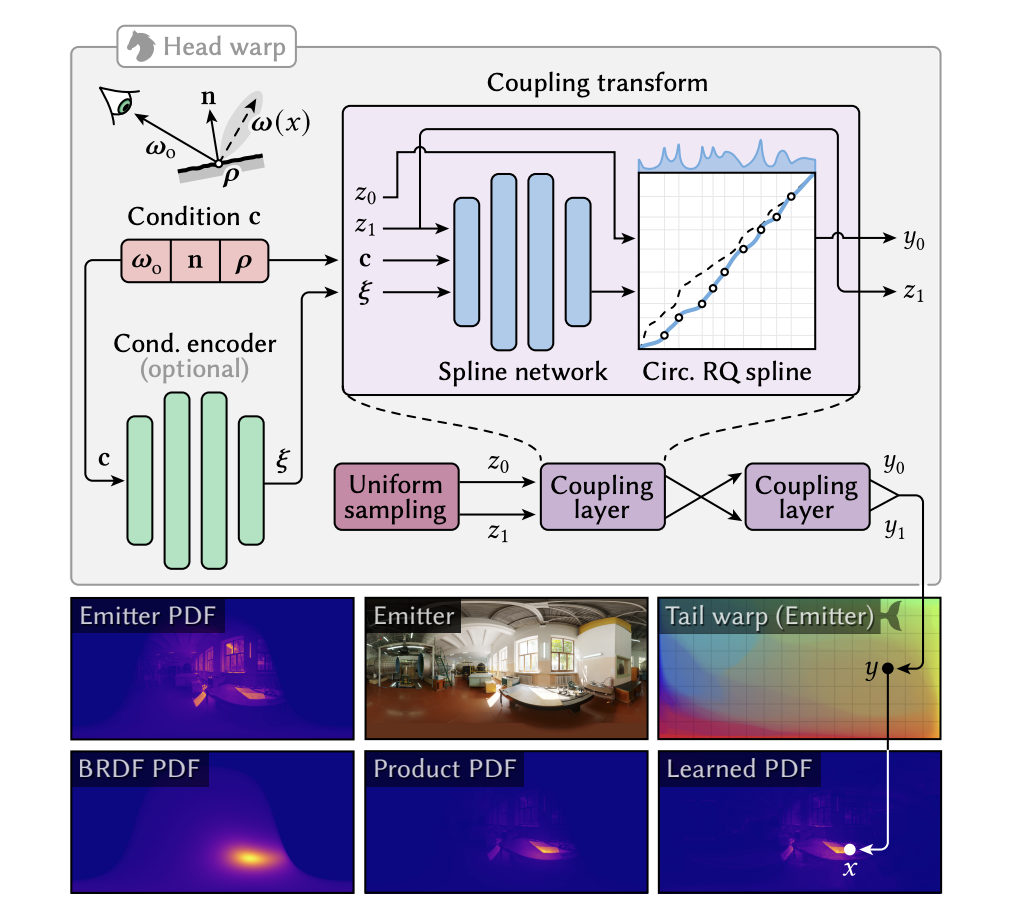
Monte Carlo Simulations and Photorealistic Rendering
Monte Carlo Simulations are essential for creating photorealistic images that look just like real photos. This process requires sampling, which can be enhanced by using methods like multiple importance sampling (MIS) to combine different factors. To improve accuracy, we can better approximate the interaction of these factors, especially in direct lighting scenarios.
The Role of Neural Probabilistic Models
Neural probabilistic models, particularly discrete normalizing flows (NF), are revolutionizing the way we handle sampling distributions in Monte Carlo rendering. Although these methods can be computationally expensive, they bring significant improvements in accuracy and efficiency.
A New Approach from McGill University and Adobe Research
Researchers have introduced a new way to improve product importance sampling using normalizing flows. This method combines a head warp, through a neural spline flow, with a large tail warp. The new architecture uses circular rational-quadratic splines and is designed to integrate seamlessly with existing rendering systems, maintaining high performance while using a compact model.
Main Components of the Proposal
- Normalizing Flows: These are generative models that create flexible probability distributions using a series of transformations.
- Warps: These transformations adjust one probability distribution into another, making them suitable for rendering tasks.
- Neural Warp Composition: This involves two parts—a head warp that simplifies the base distribution and a tail warp that transforms it into the final target distribution.
Performance Benefits
This method allows for the generation of samples that are aligned with the required probability distributions. The researchers found that separating the process into two simpler components resulted in better performance, especially in capturing light variations accurately.
Results and Future Work
When tested in Mitsuba 3, Neural Warp Composition outperformed traditional sampling methods and produced high-quality results, even at lower resolutions. While it reduced variance significantly, some challenges remain, such as handling concentrated distributions. Future research aims to enhance the training of both material and sampling models for complex materials.
Next Steps for Your Business
To stay competitive, consider leveraging the new Neural Warp Sampling Method in your workflows. Here’s how:
- Identify Automation Opportunities: Find key areas in customer interactions that can benefit from AI.
- Define KPIs: Ensure your AI initiatives have clear, measurable impacts on your business.
- Select an AI Solution: Choose tools that fit your needs and allow for customization.
- Implement Gradually: Start with pilot projects, gather data, and expand judiciously.
Connect with Us
For advice on managing AI KPIs, reach out to us at hello@itinai.com. Stay updated with continuous insights into AI by following us on Telegram or @itinaicom.
Join the Conversation
Don’t forget to check out the paper on this research and follow us on social media. If you appreciate our work, subscribe to our newsletter and join our community on ML SubReddit with over 50k members.




























